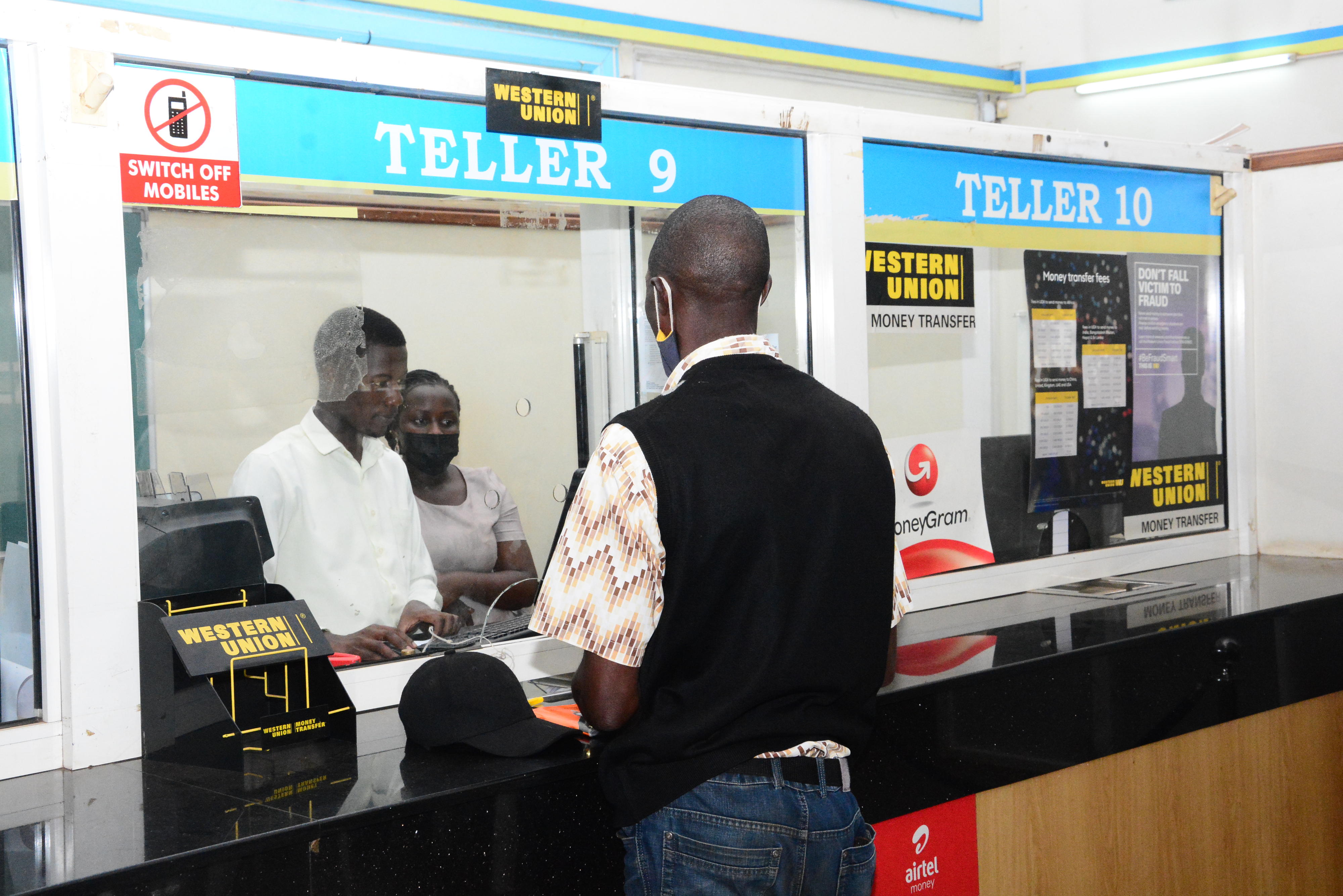Prime
How Covid-19 pandemic has left deep scars on businesses, jobs

Some of the closed arcades at in Kampala. Several businesses closed as a result of the second wave of Covid-19. PHOTO/MICHAEL KAKUMIRIZI
What you need to know:
Closed. Jobs in the Micro, Small, and Medium-sized Enterprises accoording to the study reduced from 1,026,000 to 601,000, representing a share of 41 percent or 425,000 jobs lost
The Covid-19 pandemic and its resultant containment measures for nearly two years, has had a far- reaching impact on employment, business resilience and the economic environment as a whole, according to the findings of a new report.
The study whose aim was to track how Micro, Small, and Medium-sized Enterprises (MSMEs) situations evolve during Covid-19 and in post-Covid-19 periods, describe the effects of the pandemic on Ugandan enterprises as enormous.
This is because a considerable number of MSMEs closed businesses permanently due to direct and indirect Covid-19-related factors. But the second lockdown didn’t help matters as it reversed the progress of business recovery, leaving many to suffocate to death.
The most brutally hit were enterprises in the hospitality (tourism), education and small and micro-level enterprises.
ALSO READ: How Covid-19 cut short Wanyama’s education
Overall, jobs in the MSMEs, according to the study, titled: the Socio-Economic Impact of Covid-19 on business enterprises in Uganda: Evidence from Micro, Small and Medium-Sized Enterprises, were reduced by 41 per cent representing 425,000 jobs lost.
At the macroeconomic level, the Economic Policy Research Centre (EPRC) survey, also showed that it was not spared either, further worsening the plight of MSMEs, a sector that constitutes about 90 per cent of the economy.
ALSO READ: Scarce jobs but wide opportunities
For example, around the onset of Covid-19 in April 2020, the Uganda Revenue Authority reported a collection of only Shs970 billion in tax revenue. This was less than three-quarters of the regular monthly tax revenue collection, creating a sizeable revenue gap—which eventually manifested itself in form of a Shs2.9 trillion deficit registered by the close of the financial year—an equivalent of nearly three time the current financial year’s budget allocated to the Parish Development Model exploits.
Both Foreign Direct Investments and remittances declined—the Central Bank projected that by 2020/21, the value of remittance would decline by 80 per cent from the peak of $1.3 billion registered in 2018/19.
Findings
While analysing Covid-19 effects on enterprise operations and performance, business recovery, effects on employment in the MSME sector, and business enterprise resilience, the findings of the report in many ways, although revealing, simply confirmed the fears of what many anticipated already.
It was evident in the findings that MSMEs which employ eight people on average, making a total of 1.03 million people before the start of the Covid-19 pandemic wasn’t the same by the time the economy was fully reopened early this year. Most jobs created by the MSMEs were in the education sector (0.59 million)—employing 12 people on average, followed by hospitality and tourism (0.26 million) and manufacturing (0.18 million).
“The adverse effect of Covid-19 and related restrictions on employment was felt through the loss of jobs and wage cuts,” says Tonny Odokonyero, a research fellow at EPRC while presenting the report in Kampala.
He continued: “Overall, jobs in the MSMEs under the study reduced from 1,026,000 to 601,000, representing a share of 41 percent or 425,000 jobs lost. Of these, 241,000 jobs were lost between the period before Covid-19 and the end of the first Covid-19 lockdown, and 184,000 jobs were lost between the first lockdown and the second lockdown.”
Except for manufacturing, which had a job gain of about 4,000 between the periods at the end of the second lockdown, the rest of the sectors experienced consistent job losses.

People in downtown Kampala after the lockdown was lifted last year. PHOTO/ MICHAEL KAKUMIRIZI
The education sector had the largest share of job losses, consisting of about 50 per cent, followed by hospitality at 34 per cent. Most people employed in schools were laid off due to school closures and for tourism or hospitality was as a result of the sharp decline in tourist arrivals, complete closure of bars and restaurants, and low demand for hotel services.
Job losses were also more prevalent among female workers compared to male workers. A similar pattern is observed in all Covid-19 episodes, implying a high vulnerability level for the female and young workers in the MSME job market.
The study also found out that overall, more than half of the enterprises, constituting about 54 per cent, pursued payroll reduction to ease the financial stress wreaked upon them by Covid-19 and related restrictions. Firms that implemented further wage cuts in the second lockdown increased the magnitude of wage reduction to 73 per cent, higher than the wage cut implemented in the previous Covid-19 periods.
MSMEs resilience and operations
The pandemic exposed the resilience of MSMEs as many were found wanting.
Results show that the overall resilience score/index is 60.01 which is below the threshold for high or strong business resilience. It signals an average level of resilience that is relatively weak for local MSMEs. The interruption of operations was mainly manifested in business relocation, unreachability due to locations that cannot be traced, and confirmed business closure. There is a high likelihood that the enterprises that could not be traced had also closed. This implies that about 79 per cent of the enterprises unavailable for the survey potentially closed business permanently.
The findings further indicated that almost half of the enterprises that closed business attributed it to either direct or indirect Covid-19 factors, including the eviction from business premises and transition into other businesses. Combined, the direct and indirect Covid-19-related factors account for more than 60 per cent of complete permanent business closures.
Meanwhile, the report showed that intermittent interruptions in operations were characterised by sporadic business closures from the onset of Covid-19 in Uganda in the first half of 2020 when the government instituted the first Covid-19 total lockdown through the post-first lockdown to the second lockdown periods.
The closure was either as a result of premises and operations being closed or one of the two. On average, the enterprises experienced 106 days of complete business closure in the same period and those that partially closed did it for an average of 94 days.
After the first Covid-19 lockdown (July–December 2020), the rate of complete business closure reduced to 33 per cent, and the partial business closure rate reduced to 6 per cent. There was a reduction in the complete business closure rate in the January-May 2021 period.
In the second Covid-19 lockdown period (June–August 2021), business recovery reversed—both complete and partial business closure rates rose, thanks to the government order that restricted several business operations.
This was worsened by the decline in demand and sales, and difficulty in accessing inputs, thus leading to the inability to sustain the business.
The result of the study also showed that half of the MSMEs that experienced complete closure in the first Covid-19 lockdown fully recovered and opened premises as well as business operations between July and December 2020. The recovery rate increased to 58 per cent from January to May 2021.
However, in the second lockdown, there was a reversal in the progress of business or economic activity recovery, whereby only 34 per cent of the enterprises were fully operational, and the majority, constituting about 63 per cent, again encountered complete closure.
Policy considerations
“The government should pay particular attention to the cost of doing business in a time of a shock like the Covid-19 pandemic. This is crucial for controlling inputs’ costs and ensuring minimal supply chain disruptions.
“Address key factors that determine the cost of doing business, including transport cost, removing barriers to supply chains, utility cost, and the cost of implementing COVID-19 SOPs within the MSME business environment,” reads in part the conclusion of the report.





